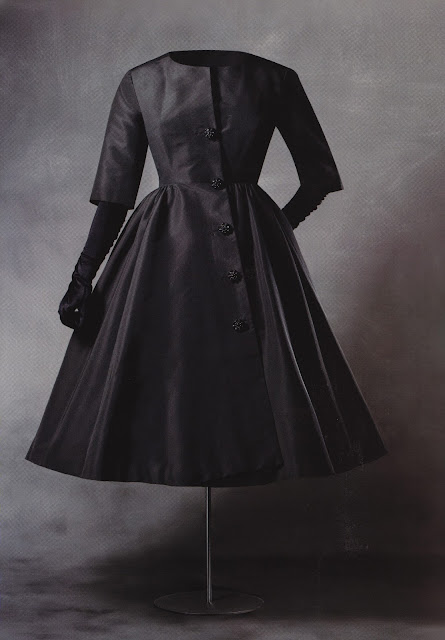 |
| Day coat in turquoise blue fine milled wool, c. 1960 |
 |
| Sweater and skirt in plain green wool knit, back view, 1957 |
 |
| Cocktail coat in black gros de Naples, 1956 |
 |
| Day dress in orange wool crepe, side view, c. 1968 |
 |
| Green silk crepe ensemble, c. 1961 |
 |
| Embroidered silk tulle jacket, 1959 |
 |
| Evening dress in yellow gros de Naples, with embroidery, 1960 |
 |
| Embroidered & beaded embellishments on silk crepe dress, 1966 |
 |
| Pillbox hat in emerald green rayon raffeta, covered with dyed-to-match cockerel feathers, 1964 |
Cristobal Balenciaga Museoa (located in "the master's" birthplace – Getaria, Spain) published a glossy hardcover catalog in 2011 – highlights from a storehouse of Balenciaga artifacts said to be the largest in the world.
The couturier staged the first fashion show of his long career in Spain in 1918 and the last in Paris in 1968. His early idols and influences were two Parisian women of a slightly older generation – Madeleine Vionnet (1876-1975) and Coco Chanel (1883-1971). To their trademark sleekness and simplicity Balenciaga brought the most sophisticated tailoring on the planet and an inheritance (through Goya, it is said) of Spanish volume and drama. In more than one source I have also read the (possibly apocryphal) assertion that twice a year for fifty years Balenciaga insisted on producing at least one garment for each collection made entirely with his own hands.
Above, a few stand-out details from the Spanish museum collection, as photographed by Manuel Outumuro.